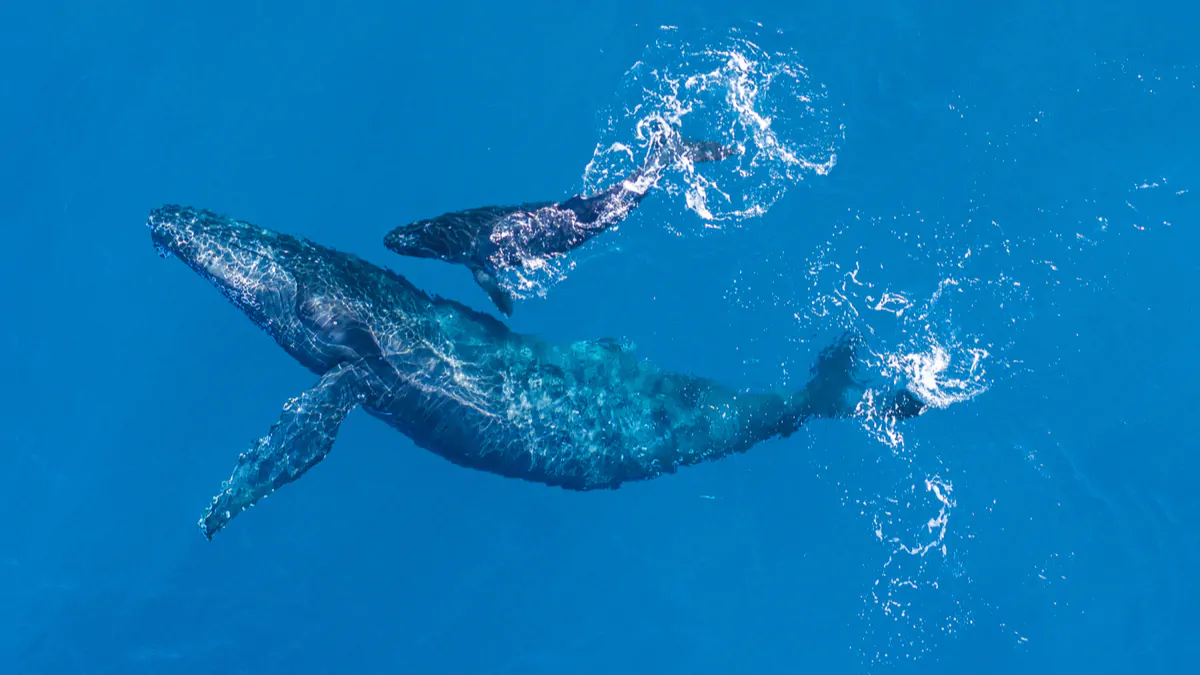Madagascar, known for its unique wildlife and breathtaking scenery, is also a prime whale-watching destination, offering visitors the chance to see humpback whales and other majestic marine creatures in their natural habitat. From July to September, Madagascar’s waters become a playground for migrating whales, particularly around the islands of Nosy Be and Sainte Marie. Explore with us the best places, tips and seasons for a memorable whale-watching adventure in Madagascar.
What Are the Best Spots for Whale Watching in Madagascar?
- Sainte Marie Island (Île Sainte-Marie):
Sainte Marie is one of Madagascar’s premier whale-watching destinations. From July to September, humpback whales migrate through the warm waters of this eastern island. The whale festival, celebrated in July, marks the start of the season, attracting visitors and conservationists keen to observe and protect these amazing creatures. Several tour operators on Sainte Marie offer safe and responsible whale-watching excursions.
- Nosy Be:
Known as the “perfume island”, Nosy Be is another popular whale-watching destination. Located in the northwest of Madagascar, it attracts whales from August to November. Surrounding islands such as Nosy Komba and Nosy Tanikely also offer excellent whale-watching spots. The diversity of Nosy Be’s marine life includes dolphins, whale sharks and other species, making it an ideal spot for a full-day excursion.
- Antongil Bay:
Located near Masoala National Park, Antongil Bay is Madagascar’s largest bay and a major staging area for humpback whales. Designated a Marine Protected Area, this region offers one of the most secluded and serene whale-watching experiences. The bay’s calm waters make it an excellent place for families and ecotourists seeking a closer connection with nature.
Why Is Whale Watching in Madagascar Unique?
Madagascar is one of the few places in the world where humpback whales come to breed and give birth. The warm, shallow waters provide a safe environment for calves, and the proximity of tour boats allows visitors to witness social behaviors, including breaching, tail flicking and the occasional bonding moment between mother and calf. Madagascar’s emphasis on ecotourism and conservation further enhances the experience, ensuring that whale-watching practices are both sustainable and respectful.
What Should You Expect on a Whale-Watching Tour?
Most whale-watching tours in Madagascar are organized by local operators who, like us, are dedicated to preserving the environment. The boats are staffed by knowledgeable guides who explain whale behavior, conservation efforts and answer questions. Many tours provide binoculars, life jackets and sometimes snorkeling equipment for those wishing to explore the waters further.
For the best experience, it’s best to book early in the morning, when the waters are calmer and whale sightings are more frequent. Excursions last from two hours to half a day, with private charter options for a more exclusive experience.
When Is the Best Time for Whale Watching in Madagascar?
The whale-watching season varies slightly according to location:
- Sainte-Marie Island: July to September
- Nosy Be: August to November
- Antongil Bay: June to September
During these months, sightings are almost guaranteed, especially in mid-season, when the whales are most active. It is advisable to book in advance, as the high season attracts a large number of travelers.
How to Prepare for a Whale-Watching Trip in Madagascar?
- Book in advance: High demand during peak months means that tours fill up quickly, so it’s essential to book in advance.
- Choose eco-friendly tours: Support tour operators who focus on sustainability to protect Madagascar’s marine biodiversity.
- Dress comfortably: Wear light clothing and pack a jacket, as it can get chilly early in the morning and on boat trips.
- Protect your skin: Sunscreen, sunglasses and a hat are essential under the tropical sun.
- Bring a camera: Immortalize those unforgettable moments, but don’t forget to prioritize the experience over the perfect shot.
What Else Can You Do Around Whale-Watching Spots in Madagascar?
Each whale-watching destination in Madagascar has its unique attractions. In Sainte-Marie, explore pristine beaches, visit local markets, or take a cycling tour. Nosy Be offers vibrant coral reefs for snorkeling and diving, as well as lively nightlife with beachfront bars and restaurants. Antongil Bay, with its proximity to the Masoala National Park, provides access to rainforest hikes, bird watching, and other wildlife encounters.
Whether you’re a nature enthusiast or an environmentally conscious traveler, whale watching in Madagascar promises an unforgettable experience. From spotting powerful humpback whales breeding to exploring beautiful coastal landscapes, a trip to Madagascar offers memories that will last a lifetime.
Plan ahead, choose sustainable tours and embark on a journey that takes in one of nature’s most magnificent spectacles.

